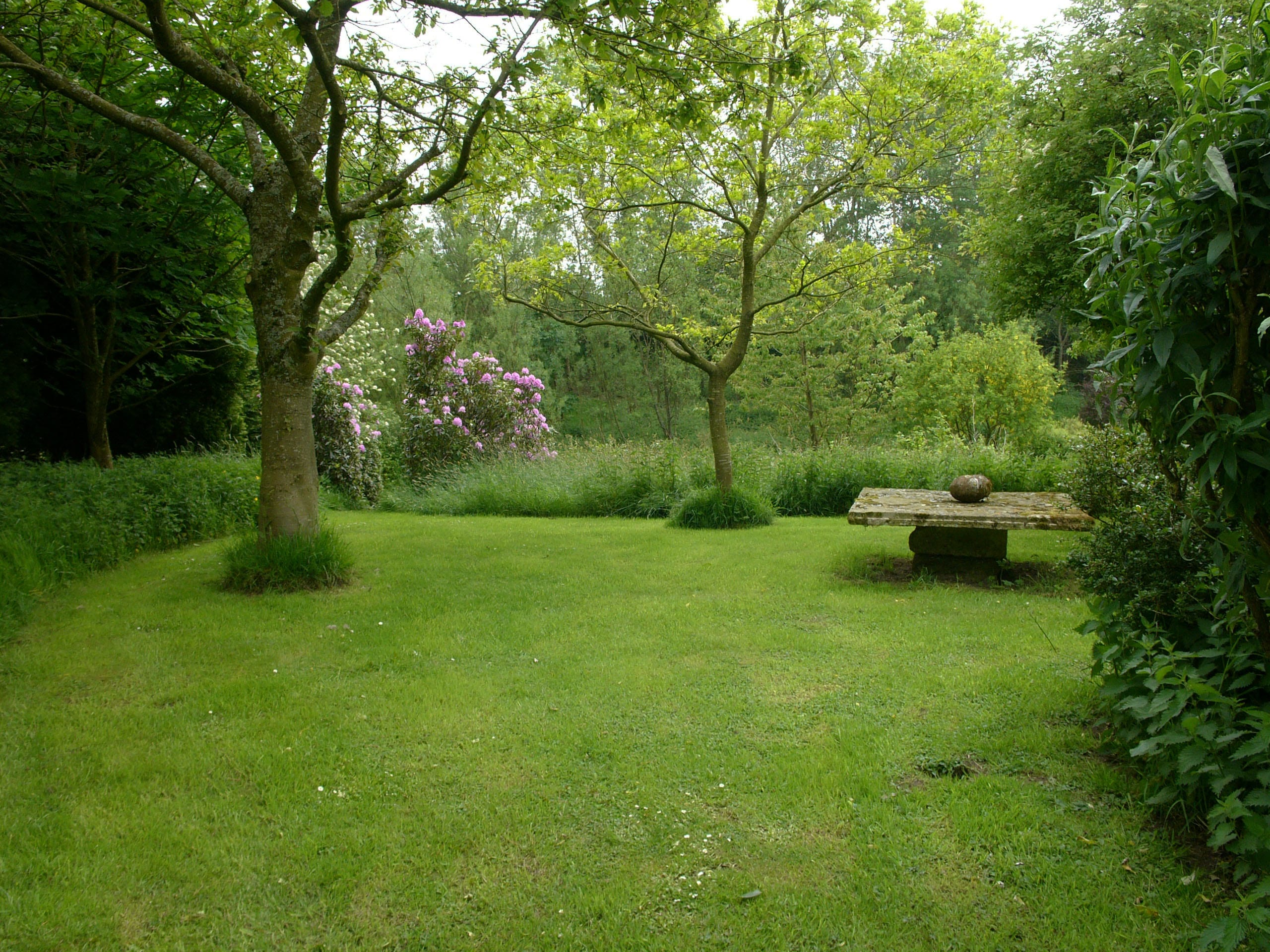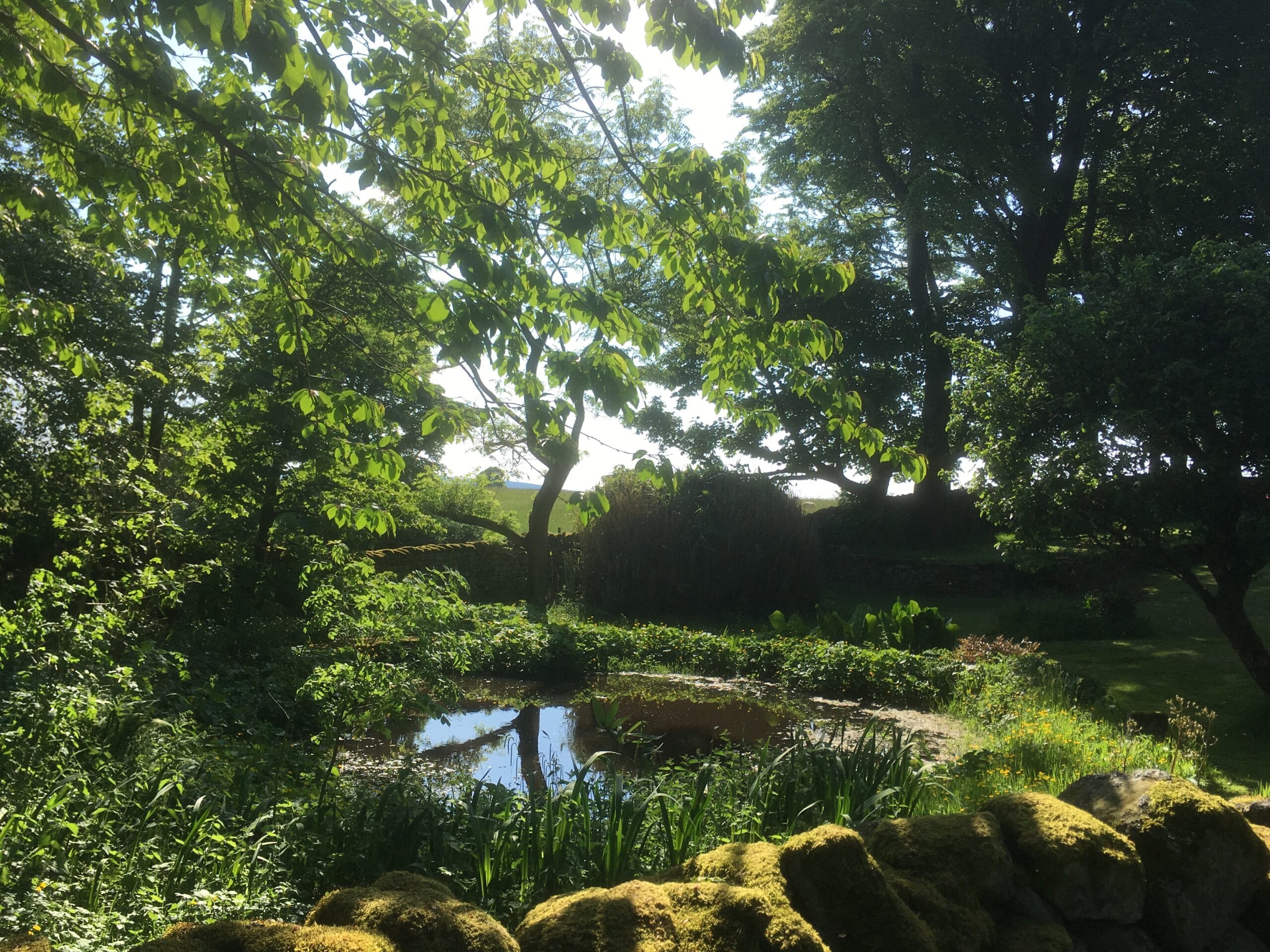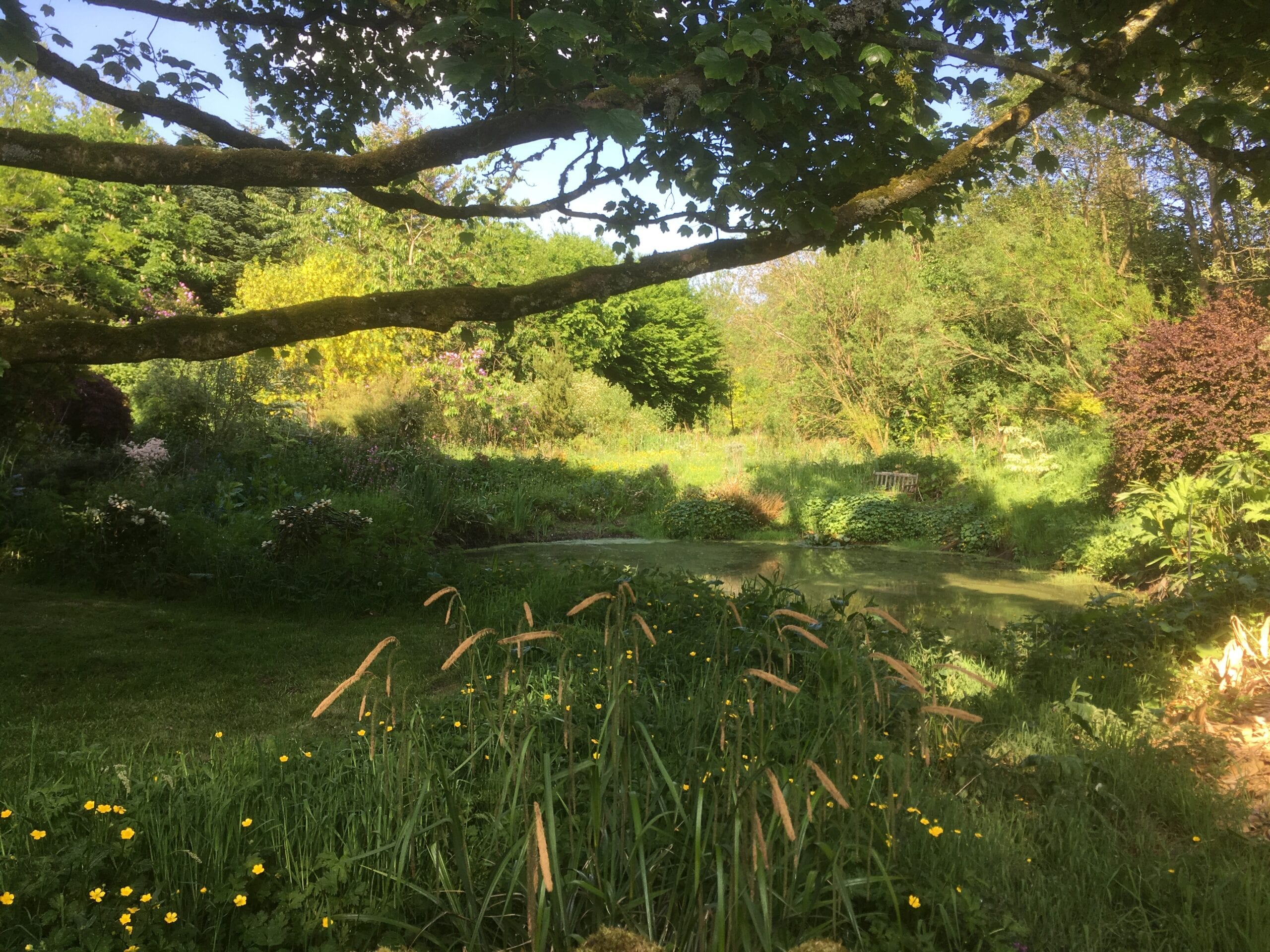The home of the Davies family and their renowned Maiden Bridge Arts Centre, offers art exhibitions and courses that are set within an important experiment in garden design. Artist David Davies and expert weaver Hannah Smeds-Davies, together with their artist daughter, Zunya and arborologist son, Ezra make a formidably creative team.
Their gardens are a dense, varied, luxuriant oasis, set within the stark, bleak, windswept magnificence that are the fells above Tatham. Over 30 years, a temperate rainforest has been cultured in the heart of this ancient livestock farming district, all under the wise watchful gaze of the Old Maiden, a majestic ancient beech tree that is worthy of trolls and sprites and Brother Oak, its gnarled diminutive neighbour.



